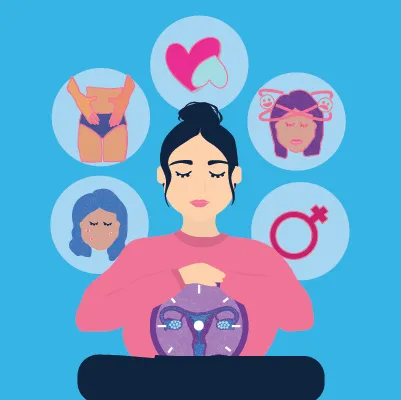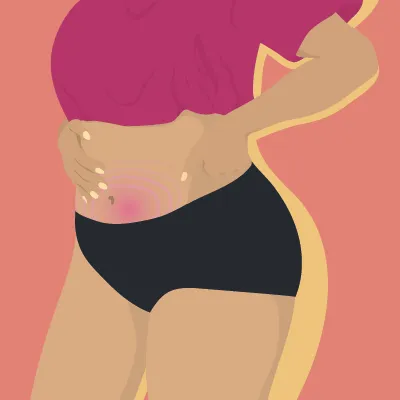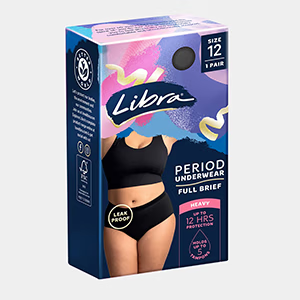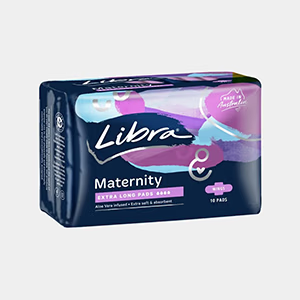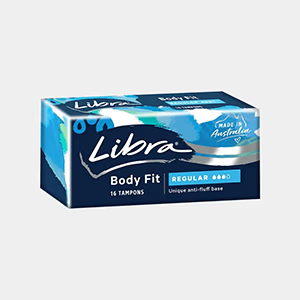Jul 07, 2025
Your Ultimate Guide to Your Menstrual Cycle
Understanding your menstrual cycle is honestly one of the most empowering things you can do for yourself. Far from being just about your period, your cycle is this incredible, complex process that influences everything from your energy levels to your mood, creativity, and even your skin.
What Is the Menstrual Cycle?
Your menstrual cycle is your body's monthly prep session for potential pregnancy. Whilst we often say it's 28 days long, cycles can naturally range from 21 to 35 days and still be perfectly normal. Every cycle is beautifully unique.
Your cycle starts counting from day one of your period and goes until the day before your next period begins. Tracking this pattern can help you understand your body's rhythms and predict when your next period will rock up - no more surprises!
The Four Phases of Your Cycle
Phase 1: Menstrual Phase (Days 1-5)
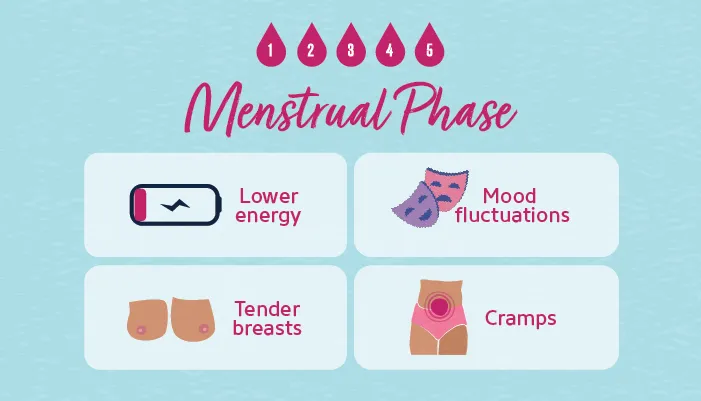
What's happening: This is your period - when your uterus sheds its lining because no pregnancy has occurred.
Signs: You might experience cramping as your uterus contracts to expel the built-up tissue. Many find their energy naturally dips during this phase, and you may notice breast tenderness and mood changes due to dropping hormone levels. Your flow is typically heaviest in the first few days, then gradually decreases.
Flow tips: Listen to your body's need for rest and gentle movement. Warm baths can work wonders for cramping, whilst light stretching or walking may help with circulation. Focus on iron-rich foods to replenish what you're losing, and don't hesitate to take things slower during this time.
Phase 2: Follicular Phase (Days 1-14)
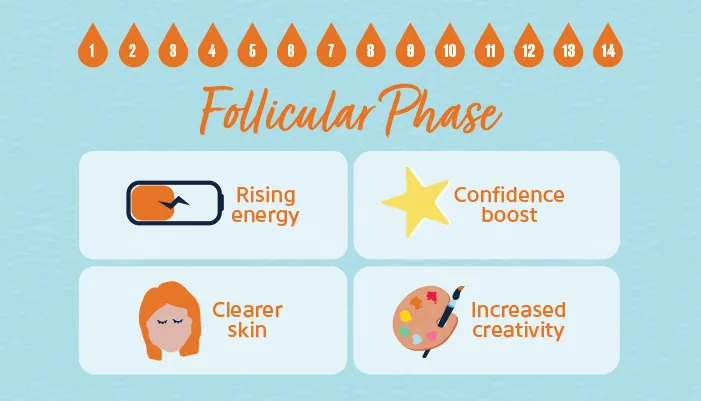
What's happening: Starting on the same day as your period, this phase extends beyond menstruation as your body begins preparing for potential ovulation. Your pituitary gland releases hormones that stimulate your ovaries to prepare an egg for release.
Signs: As oestrogen levels gradually increase, you'll likely notice your energy returning and even building beyond normal levels. Your skin may appear clearer and more radiant - hello, natural glow! - and you might feel more optimistic and motivated. The uterine lining also begins to thicken again in preparation for a possible pregnancy.
Flow tips: Take advantage of your rising energy levels to tackle new projects or challenges. This is an ideal time for brainstorming, learning new skills, or starting that workout routine you've been putting off. Your mental clarity is sharp, so use it wisely - you're basically a productivity queen right now!
Phase 3: Ovulation Phase (Days 15-17)
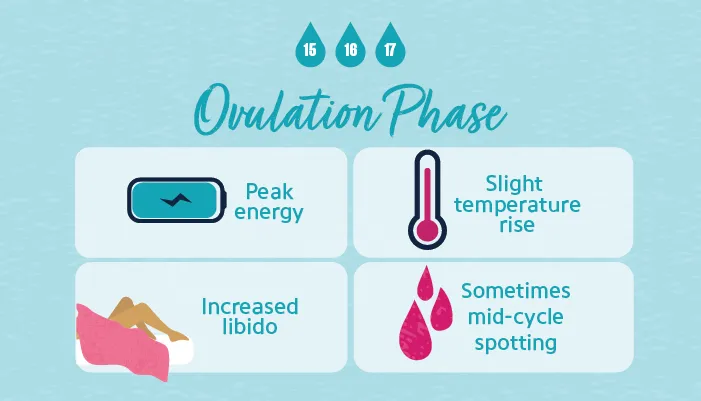
What's happening: This is your most fertile time when a mature egg is released from the ovary into the fallopian tube.
Signs: You might experience a slight increase in body temperature and notice changes in your discharge - it becomes clearer and more stretchy, think egg white consistency. Some may feel a brief, sharp pain on one side of their pelvis when the egg is released. Energy levels are typically at their peak during this phase, and you may feel more outgoing and confident. Your libido often increases naturally during this fertile window.
Flow tips: This is your absolute power phase! Schedule important meetings, presentations, or social events. Your communication skills and confidence are at their peak, making it perfect for networking or having those important conversations. Embrace your natural magnetism - you're literally glowing!
Phase 4: Luteal Phase (Days 18-28)
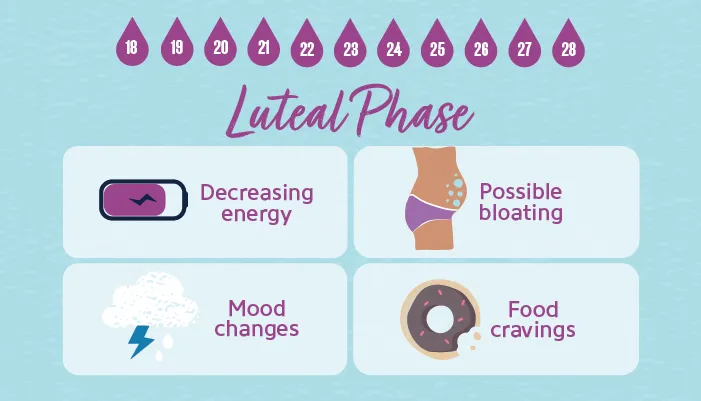
What's happening: After ovulation, the empty egg follicle releases progesterone to maintain the thickened uterine lining. If pregnancy doesn't occur, both oestrogen and progesterone levels plummet towards the end of this phase, triggering your next period.
Signs: This hormonal shift often brings premenstrual symptoms like bloating, breast tenderness, food cravings, and mood swings. You might feel more introspective and prefer quieter activities. Some experience trouble sleeping or feel more emotionally sensitive during this time.
Flow tips: Honour your need for introspection and slower-paced activities. Practice extra self-care, prioritise sleep, and don't fight those comfort food cravings - your body knows what it needs. This is your cosy phase, so lean into it.
Tracking Your Cycle: Why It Matters
Understanding your cycle patterns can help you predict when your period will start, plan important events around your energy levels, and identify any irregularities that might need medical attention. It also allows you to optimise your nutrition and exercise routine, better understand your mood patterns, and support fertility planning whether you're trying to conceive or avoid pregnancy. You can track your cycle by simply marking the first day of your period in your calendar or using a period-tracking app. After a few months, you'll start to see your unique pattern emerge.
Hormones: The Behind-the-Scenes Players
Oestrogen: Rises during the follicular phase, peaks at ovulation, then drops. Responsible for energy boosts, clear skin, and confidence.
Progesterone: Rises after ovulation, then drops before your period. Can cause mood changes, food cravings, and fatigue - but it's also your calming, nurturing hormone.
FSH (Follicle Stimulating Hormone): Helps eggs mature in your ovaries.
LH (Luteinising Hormone): Triggers ovulation.
When to See a Healthcare Provider
Whilst every cycle is different, some signs warrant medical attention. You should consult a healthcare provider if:
- Your periods last longer than 7 days
- You experience extremely heavy bleeding that requires changing a pad or tampon every hour
- Your cycles are consistently shorter than 21 days or longer than 35 days
- You experience severe pain that interferes with daily activities
- There’s a sudden change in your regular cycle pattern
Remember, there's absolutely no shame in seeking help - your health matters!
Every cycle is beautifully unique, so focus on understanding your normal rather than comparing yourself to textbook standards.
Love, Libra x
Essity Australasia makes no warranties or representations regarding the completeness or accuracy of the information. This information should be used only as a guide and should not be relied upon as a substitute for professional, medical or other health professional advice.


